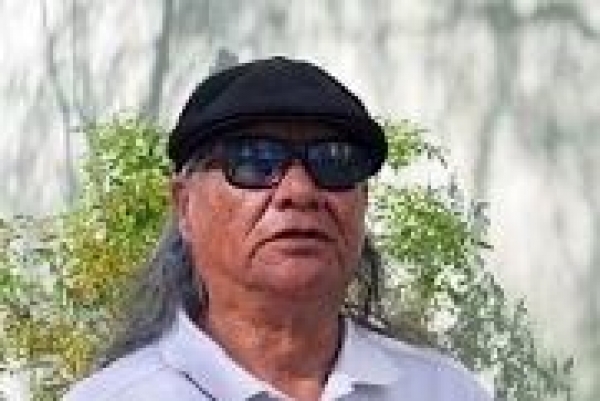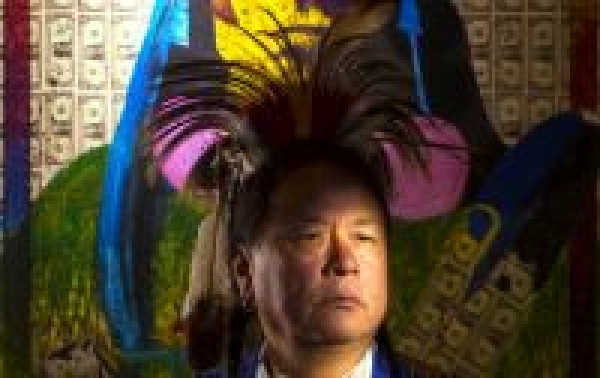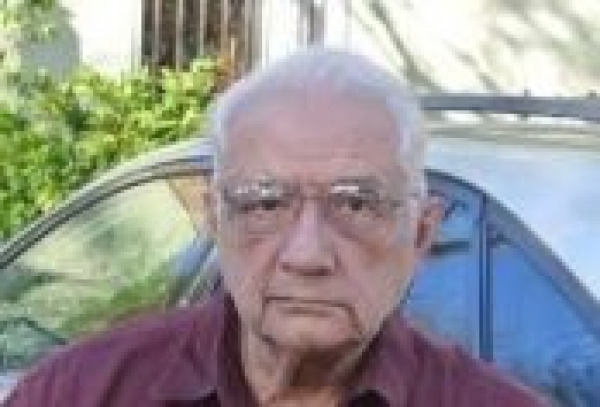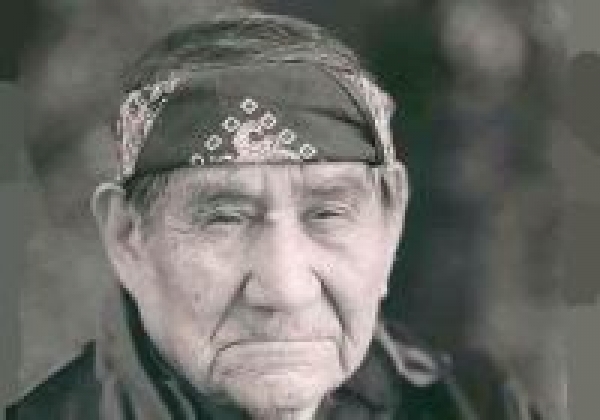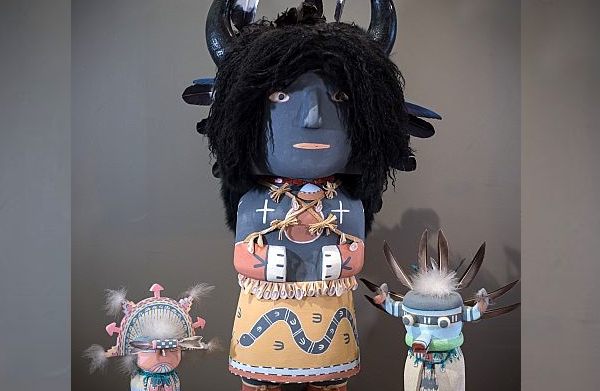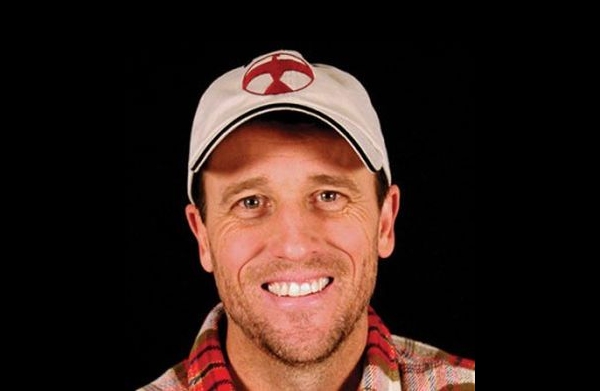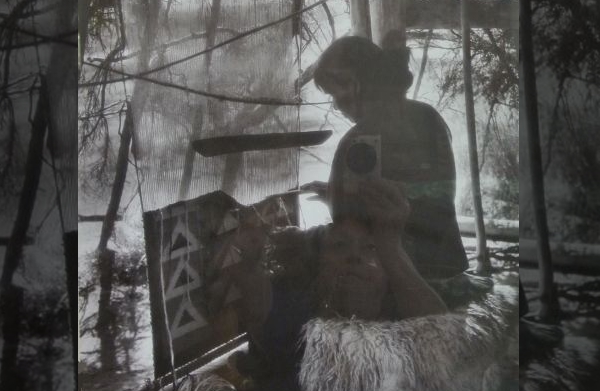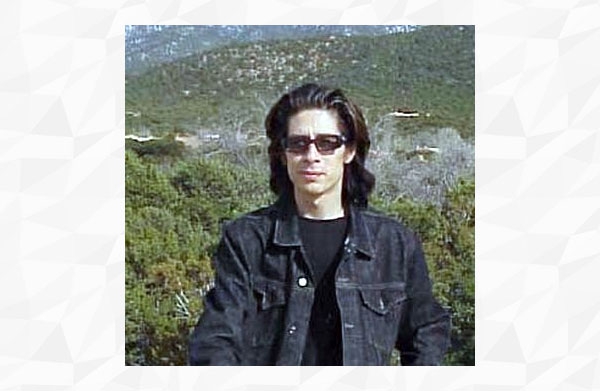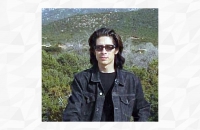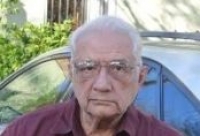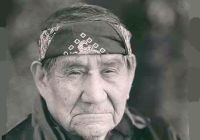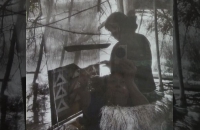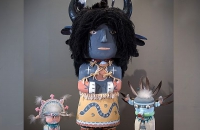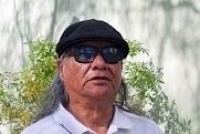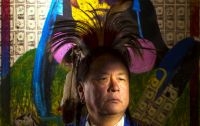Our Artists
Justin Tso
JUSTIN TSO
Navajo Dine (1948 – present)
Justin Tso, born in Canyon de Chelly in 1948, is a traditional artist who enjoys painting the Navajo Reservation landscapes, the proud Navajo people, and his horses. He believes his paintings represent an art form that has all but disappeared in recent years. Born and raised in Canyon de Chelly, Arizona he draws his spiritual nourishment from the mystery, drama, riot of color and miracle of nature that is this canyon which has allowed his paintings to illustrate not only the landscape but the many symbols that tell the stories, the legends, the deep beliefs of his people, The Dine, the Navajo.
Justin Tso’s award-winning opaque watercolors depict ancient tales and traditions of the Navajo people. Like his predecessors, Harrison Begay and Beatien Yazz, Tso devotes himself exclusively to the stylized paintings of his tribe and to the traditional Navajo life, showing the beauty of a timeless, peaceful and gentle world.
Tso is a serious and dedicated artist who is constantly working to improve his technique and mastery of color. Although he prefers to work in opaque watercolor, he occasionally uses other media such as oil land casein. Tso has been painting and exhibiting seriously for over 30 years and has worked as an electronics repairman as well as a horseback tour operator.
Tso (pronounced So) attended schools in Chinle, Arizona; Gallup, New Mexico; and Lawton, Oklahoma, and later served in the armed forces for three years (1969 – 1971) before completing his education at I.T.C. in San Francisco, California, and the University of Utah in Salt Lake City. Although he studied art briefly in the public schools he attended, Tso is almost entirely self-taught.
Tso has had numerous exhibitions, countless awards and has been featured in publications such as “Plateau” 1982, and “Southwest Art Magazine” May/June 1983.
Jack Tobaahe Gene
JACK TO’BAAHE GENE
(Navajo 1953 – 2016)
“Some artists, clutching an Art diploma, rush out to become
famous and wealthy overnight. Almost invariably they learn the truth, which
Is that being an artist, like being a person, is a lifelong process of self-improvement.
[Jack To Baahe] Gene understands that basic truth: asked what he’d like to be doing
20 years from now, he said, “What I’m doing now – painting – but better known.”
Art Talk Magazine, February 1991
Mud, smoke, dust, stars and sand…These are the elements that shape the lives of the Dineh (Navajo).
Jack To’Baahe Gene was born into the world of the Dineh and raised by his paternal grandparents in the remote hills of Smoke Signal, Arizona. From his grandfather, a medicine man, he learned the spiritual ways of his people. From his grandmother, an herbalist and weaver, he learned of the powers invested in all living things. “They taught me to see things, to observe.” Jack Gene remembers, “While I was growing up they were teaching me art with everything they did. They would say, ‘See, the trees and plants are moving, they are alive.’ We’d look at the clouds and the mountains. Now my art is based on all those things, but are not just clouds anymore. I’m going beyond what my grandparents taught me. Now I strive for the soul of clouds and mountains.”
His formative years were spent under the great skies of the Colorado Plateau, riding long distances on horseback, listening to stories and singing the songs of the Dineh. Within the Hogan, Jack worked with colored sands to create the beautiful and symbolic sand paintings for which the Dineh are famous. It was here that the artist within began the long journey out into the modern world.
Today, Jack Gene is a consummate professional artist who paints directly from the soul of the Dineh culture. His images are colorful, compelling and intimate visions of a land and people long hidden from the outside world. His painting style is a unique combination of influences: from Native sand painting to the European painting traditions of Rembrandt, Millet and Courbet. Sand finds its way into his surfaces; made rough to flesh out the coarseness of life lived on bare ground. Bold color rakes through images of clothing or hillsides, a modernist’s color sensibility fused to an ancient awareness. Everything is symbolic; nothing is exactly what it appears to be. In this way, Jack brings to life, through painting, the visions of the medicine world, the world of the healer. For this is what he is, a healing path between opposites: the ancient and the modern; the past and the future; the sand and the spirit.
EXHIBITIONS:
…Two Brothers One Show, Bischoff’s Gallery, May 2016 (Jack passed away March 2016)
…Navajo Nation Fair
…Phoenix Sky Harbor Airport Exhibition Program: “Whoop and Holler Exhibit”
…One Man Exhibition of paintings in France
…Wheelwright Museum, Santa Fe, New Mexico
…Heard Indian Fair, Phoenix, Arizona Best in Show 1993
…SWAIA Santa Fe Indian Market, Santa Fe, New Mexico
PUBLICATIONS:
Native American Art Magazine, April /May Issue 2016
Stan Natchez
STAN NATCHEZ
(Shoshone-Tataviam or Paiute b. 1954 – present)
Artist Stan Natchez took a circuitous route to his successful career as a full-time artist. His father, an intellectual, authored a book on the connections between Jungian and Native American symbolism and Natchez himself earned a bachelor's and master's degree before teaching humanities for 10 years at a prep school, then serving as an editor at Native Peoples Magazine. Always a creative child while growing up in Los Angeles, it was his participation in Native American dances that led him to painting.
“In the white man’s world, if you want to get an education, you go to college,” Natchez explains. “In the Indian way, if you want to get knowledge, you go through ceremonies. I am a California Indian (Tataviam, “the people who face the sun”) and all our ceremonies are gone. But I was fortunate enough to travel throughout the United States and meet people who lived in tribes that had ceremonies and invited me in.” Performing traditional Native American dances throughout Europe and the U.S., Natchez developed a fine eye for both color and composition from the beadwork he created for his regalia. By learning from elders of many tribes during these travels, he gives credit to this artistic medium for building in him a stronger sense of cultural self-esteem.
Having earned a Bachelor of Science degree at the University of Southern Colorado (Education) and a Master of Fine Arts (Curriculum) at Arizona State University, Stan Natchez has always been an educator, and a student of the world. Former Humanities Department Chairman at Arizona's Orme School, he has also taught art in several public schools. Currently, he is Editorial Advisor and Education Coordinator for the Native Peoples Magazine. In addition to being an artist, Mr. Natchez is a legal advocate for the Native American community.
Performing traditional Native American dances throughout Europe and the U.S., Natchez developed a fine eye for both color and composition from the beadwork he created for his regalia. By learning from elders of many tribes during these travels, he gives credit to this artistic medium for building in him a stronger sense of cultural self-esteem. For many years, Mr. Natchez participated in the Sun Dance in South Dakota. This ceremony dates back at least 300 years. Dancers circle a tree trunk and pray for spiritual rebirth and earth regeneration.
"I feel fortunate for having been raised in the city because of the perspective it gave me on modern life," Natchez observes. "However, without an awareness of our traditional heritage, we as Native Americans have no identity. By taking the best of both worlds, the modern and the traditional, we are better able to find balance in our lives."
The philosophies and techniques of these two worlds have allowed Natchez to achieve a complex harmony in his work - with a distinctive Neo-Pop style. Inspired by Andy Warhol, Jasper Johns and other Pop artists, his paintings exude the power of color and familiar objects. His unique and dramatic mixed-media paintings may incorporate a range of items from beadwork to bottle caps into their design. Images are conveyed with the two-dimensional look of Native American "ledger art" even as the artist's subjects ask viewers to look deeper at that which is represented. By overlaying many of these images over actual U.S. currency the representation of ideas grows more compellingly complex. "When I paint the dollar bill," the artist explains, "I'm saying that the dollar bill is a symbol of the world we live in. When you go to the store, what do you need to buy something? You need money, right? In the 1700s and 1800s Indians painted on deerskin, buffalo or elk hides. And if you wanted something, hides were your money. So the modern-day hide is the dollar bill."
Stan Natchez had an artistic epiphany when he interpreted a sheet of uncut dollar bills as ''the new buffalo hide'' and painted on it the image of a buffalo hunt. He soon expanded the idea to painting on pages from the bible and telephone books and on stock certificates and other documents. That cultural stamp, often involving money and the American Flag, is combined in his paintings with traditional Indian and landscape images.
Like many of his cohorts, Natchez takes on subjects with anger potential but portrays them with humor and a painterly finesse. When he was a child, his grandmother schooled him in the traditional beadwork that adorns dance costumes and taught him to hold bitterness and hatred as a disease.
In terms of his art, Natchez feels equally strongly about communicating contemporary Native American philosophy that has been purged of any romantic or stereotypical idealism. Instead, the viewer is exposed to traditional teaching and contemporary cultural doctrines.
As Natchez says, "I paint the life I live and so every painting I do is, in some way, a self-portrait. My art is about you and the way I respond. That is my experience...my experience is my art...and art is my life."
SOLO EXHIBITIONS INCLUDE:
Union Club, Frankfurt, Germany
Merrill Lynch, Munich, Germany
Spirit of Native America, Latin American Tour, American Indian Contemporary Arts
American West Gallery, Sun Valley, Idaho
First People’s Gallery, Minneapolis, Minnesota
Elaine Horwitch Galleries, Indian Market, Santa Fe, New Mexico
Visions of Native America, Senate Rotunda Room, Washington, DC
Roskilde Festival, Cultural Exchange and Art Show, Roskilde, Denmark
Cline Gallery, Santa Fe, New Mexico
Bischoff’s Gallery, Scottsdale, Arizona
Annual Show at Stan Natchez Studio Santa Fe, New Mexico
GROUP EXHIBITIONS & COLLECTIONS INCLUDE:
Native American Images, Raymond-James Financial Art Collection, Eckerd College
Metropolitan Art Institute, Washington, DC
Autry National Center, Los Angeles
Words Rockwell Museum of Art, Corning, NY
The Museum of the American Indian, New York
Southwest Museum, Los Angeles
Smithsonian: National Museum of the American Indian (Red Cloud Living in Two Worlds) 2003
PUBLICATIONS:
Whole Life Times
Focus/Santa Fe, January February March 2001
Santa Fe New Mexican
SPECIAL ACKNOWLEDGMENTS:
Selected artist for Parada del Sol poster, Scottsdale, Arizona 2006
Louis de Mayo
Louis De Mayo is a stylized painter of contemporary Indian figures, born in Philadelphia, Pennsylvania, in 1926 and living in Phoenix, Arizona, since 1973. When a gallery owner suggested that De Mayo tell people he is Indian to facilitate sales, De Mayo asked whether "if I wanted to paint a horse, would I have to say I was part horse?" His friend, Carl Gorman who was Navajo told him, "Louis, if people ask what tribe you're from, tell them you're Awoppaho."
Louis de Mayo has lived in the Southwestern United States for many years absorbing the rich spiritual heritage of the Native American cultures that inhabit the deserts, mesas and mountains. Arizona was the catalyst de Mayo used to express himself and the freedom he has always associated with art. He was able to capture the splendor and grandeur of Arizona where he was exposed to a magical beauty and wealth of imagery. From this emerged his distinctive style and vision of the world.
EARLY YEARS:
A first generation Italian-American, “Louie” De Mayo was raised in the neighborhood that produced Mario Lanza and Frankie Avalon. "If you spit," he claims, "you would hit a singer." After serving in the Marines during World War II, he studied at the Pennsylvania Academy of Fine Arts/Hussian School of Art under the G.I. Bill; and Fleischer Art Memorial* then was employed in a series of commercial art jobs. He relocated to Phoenix as Art Director for Arizona Highways. Once De Mayo retired from the magazine he focused all his time and energy into his personal artwork, with an emphasis on Native American pieces. De Mayo says he chose Native Americans for his work because of their “dramatic quality” and “manner of dress.” His artwork continues to inspire and capture the essence of the Native American spirit, and at the age of 90, De Mayo continues to work and create these spiritual pieces.
"I really have only one regret about leaving Philadelphia, and that is that I didn't leave it sooner. I choose Indians to paint because of their dramatic quality and their manner of dress," he states. "I had a strong emotional attraction to the Yaqui and their black garb. Maybe it's because I grew up seeing women in black. My people are all dark skinned. I don't want to make too much of a racial issue in my work, but it certainly could stem from such roots. I look at life as if it were a big slow-moving steamroller. It gives you a helluva lot of time to get out of the way if you fall down, but if you just want to lie there, it is going to roll right over you."
A trailblazer in the realm of contemporary southwest art, De Mayo has been instrumental in pushing the envelope and abolishing the stereotypes of what the viewing public considers Southwestern. Working in acrylic he utilizes dramatic color, the abstract, numbers and a bit of whimsy to enhance his images and message together with a bold, daring and controlled simplicity that fill his canvases. De Mayo is best known for his interpretation of the Native American spirit, however, in recent years, he has found a renewed passion in contemporary and realistic style.
PARTIAL LIST OF COLLECTIONS:
- The Smithsonian Museum
- Museum Biedermann
- Longview Museum
- Scottsdale Museum
- major private collections
PUBLICATIONS:
- De Mayo was written up and featured on the cover of Southwest Art, December, 1980.
* Samuel S. Fleisher Art Memorial, also known as Church of the Evangelists and St. Martin's College for Indigent Boys, is a set of four buildings with a history that unites idealism or religious beliefs, service to the poor, and art. Formerly an Episcopal church in the working-class Bella Vista neighborhood of South Philadelphia, it is best known as the home of the Graphic Sketch Club founded by Samuel S. Fleisher, which offers free art lessons to children and adults.
The four buildings include a campanile built in 1857, a basilica built 1884-1886, St. Martin's College built in 1906, and two row houses built in the 1850s. Since Fleisher's death in 1944, his trust, which owns the buildings, has been administered by the Philadelphia Museum of Art. The Art Memorial was listed on the National Register of Historic Places in 1982 and is located at 711-721 Catharine St. in Philadelphia, Pennsylvania.
Harrison Begay
HARRISON BEGAY
Navajo (November 15, 1917 – August 18, 2012)
Haashké yah Níyá, "Warrior Who Walked Up to His Enemy"
Harrison Begay was a renowned Navajo painter, perhaps the most famous of his generation. Begay specialized in watercolors and silkscreen prints. He was the last living former student of Dorothy Dunn at the Santa Fe Indian School. His work won multiple awards and is exhibited in museums and private collections worldwide.
Harrison Begay was born on 15 November 1917 (although his birth year has also been record as 1914) at White Cone, near Greasewood, Arizona on the Navajo Nation, to Black Rock and Zonnie Tachinie Begay. His mother belonged to the Zuni White Corn Clan, and his father was Walk Around Clan Near Water Clan. Young Harrison herded his family's flock of sheep near Greasewood, where he lived most of his life.
In 1933, he entered the Santa Fe Indian School to study art under Dorothy Dunn in her new Studio School. His classmates included Gerald Nailor, Quincy Tahoma, Geronima Montoya and Andrew Tsihnahjinnie. Begay learned Dunn's characteristic "Studio Style" or "flat-style painting"; in her book American Indian Painting of the Southwest and Plains Areas, Dunn described Begay's work as "at once decorative and lifelike, his color clear in hue and even in value, his figures placid yet inwardly animated.... He seemed to be inexhaustibly resourceful in a quiet reticent way."
In 1940, Begay attended Black Mountain College in North Carolina, to study architecture for one year. In 1941, he enrolled in Phoenix College in Arizona. From 1942 to 1945, Begay served in the US Army Signal Corps.
ARTISTIC CAREER AND AWARDS:
Begay returned to the Navajo reservation in 1947 and made his living as a painter ever since. Begay continued to paint in the flat, "Studio style" throughout his long career – he was still painting (in acrylics) in 2004, at age 90.
His work has been included in a vast number of public and private collections of Native American art, including the Museum of the American Indian, the Museum of Modern Art, the Museum of Northern Arizona, the Heard Museum, the Museum of Indian Arts and Culture, the Wheelwright Museum, the Southwest Museum, the Philbrook Museum, the Gilcrease Museum, and many more.
Begay won two grand awards at the Gallup Intertribal Ceremonial and has been a consistent winner at state and tribal fairs. In 1954, he was awarded the French Ordre des Palmes Académiques. In 1995, he was awarded the Native American Masters Award by the Heard Museum. In 2003, he won the Lifetime Achievement Award from the Southwestern Association for Indian Arts, the organizers of the annual Santa Fe Indian Market.
Begay painted scenes from traditional Navajo life, showing the beauty of a timeless, peaceful and gentle world. "Although his prodigious output included facile minor works tending towards sentimentality, his major work is characterized by inventiveness, originality, refinement and delicacy." His most familiar subjects are Navajo people in ceremonial and daily life, horses and riders, and deer. Begay was named a "Living Legend" in 1990 by Indian Art Historian Ralph Oliver, per "Biographical Directory of Native American Painters."
Chester Poleyestewa
Hopi carver Chester Polyestewa has been making Kachinas since he was a young boy. His Kachinas are made in the old, traditional manner using cottonwood roots and the same style that the Hope people have given to their own children for centuries. They are painted with natural dyes and mineral paints that he makes himself. The finishing touches are beautiful feathers, Angora goat hair and deerskin. Chester is known for his exceptional feather work. He is a well-known carver whose work is sought after by collectors around the world.
Chester Poleyestewa is a Hopi Artist who carves only in the traditional style, a style that is more similar to that of kachinas of the early 1800’s: arms tucked close to the body and well thought out adornment. This differs from the intricately carved kachinas that are heavily carved with exaggerated motion.
G. Russell Case
Utah painter G. Russell Case is deeply invested in the mysteries of simplicity, and his native landscape has provided him with an impressive laboratory. “How you go about simplifying is one of the hardest things about painting,” he acknowledges. “It’s like a novel. You have your main character, and then your supporting characters, and after that the more stuff you put in, the more distracting it gets.” In painting, each brush stroke or compositional element signifies a host of conscious and unconscious decisions, and each precludes a host of other possibilities. Drawing just enough of the right detail from the landscape is fraught with enough opportunities to wreck a whole day’s work. “What I like is when I come upon a scene so simple that I actually have to add interest back in,” he laughs. “The point of simplicity is to let the idea come through the landscape.”
William Thomas "Tom" Mullarky
William Thomas Mullarky (1897 - 1959) was known as “Tom” to the locals. Tom Mullarky was a photographer of some re-known from Gallup, New Mexico who recorded images of early 20th century Native American life in the Pueblos of Acoma, Zuni, Hopi and in the Navajo lands around them. His notable works were taken during the late 1920’s through the middle 1950’s.
Gregory Lomayesva
Gregory Lomayesva is a mixed media artist drawing from his Hopi and Hispanic heritage as well as popular culture icons. Well known for his inspired and colorful, carved wooden masks and figures, Gregory’s work ranges from small masks to large works in wood, bronze and steel.


